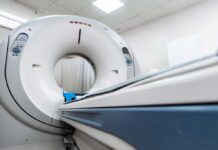
Japanese scientists have uncovered a shocking molecular connection between male fertility and cancer that could revolutionize how we understand and treat both conditions.
Story Highlights
- Kyoto University discovers STAG3-cohesin protein complex essential for sperm production and linked to cancer growth
- Breakthrough reveals why targeting this complex could treat both male infertility and B-cell lymphomas
- Research published in top-tier journal shows promise for dual-purpose therapeutic approaches
- Discovery challenges previous understanding of how DNA organization affects reproductive health and disease
Breakthrough Discovery Links Reproductive Health to Cancer Biology
Professor Mitinori Saitou’s research team at Kyoto University identified the STAG3-cohesin protein complex as a critical organizer of DNA architecture in spermatogonial stem cells. These cells produce sperm throughout a man’s lifetime, making their proper function essential for male fertility. The complex controls how chromosomes are arranged in three-dimensional space within cell nuclei. Without STAG3-cohesin, male mice become completely infertile due to defective sperm development. This represents the first identification of STAG3’s role in mitotic cell division, expanding beyond its previously known function in meiosis.
‘Scientists discover new 3D genome organizer linked to fertility and cancer’– Kyoto University findings on DNA architecture within stem cells that give rise to sperm offer insights into reproductive medicine and cancer [Paper – https://t.co/64jF6OjJc4]: https://t.co/XKgMSmK4xY
— Stem Cell Foundation (@AusStemCell) August 28, 2025
Cancer Connection Reveals Therapeutic Opportunities
The research team discovered STAG3 is highly expressed in human immune B cells and B-cell lymphomas, creating an unexpected link between fertility mechanisms and cancer proliferation. When researchers inhibited STAG3 activity in lymphoma cells, cancer growth slowed significantly. This dual role suggests the same molecular pathway governing sperm stem cell organization also drives certain cancer types. The finding opens possibilities for developing treatments that could address both male infertility and specific cancers simultaneously. Such targeted therapy approaches represent a more efficient use of medical resources compared to separate treatment protocols.
Watch:
Scientific Validation and Research Methodology
The study underwent rigorous peer review before publication in Nature Structural & Molecular Biology on August 25, 2025. Dr. Masahiro Nagano and Dr. Bo Hu contributed key research components at Kyoto University’s Institute for the Advanced Study of Human Biology. The team used advanced 3D genome mapping techniques to identify unique DNA architecture patterns in spermatogonial stem cells. Their methodology involved both mouse model studies and analysis of human tissue samples. The consistent results across different experimental approaches strengthened the findings’ credibility and potential clinical applications.
Future Implications for Medical Treatment
This discovery could transform treatment approaches for an estimated 15% of couples worldwide experiencing infertility issues, particularly those involving male reproductive problems. Pharmaceutical companies now have a specific molecular target for developing drugs that could restore fertility in men with STAG3-related deficiencies. The cancer treatment implications are equally significant, as B-cell lymphomas affect thousands of Americans annually. However, researchers acknowledge that further human clinical studies are necessary to validate safety and effectiveness. The timeline for bringing STAG3-targeted therapies to market likely extends several years due to required regulatory approval processes.
Sources:
Scientists discover new 3D genome organizer linked to fertility and cancer – Scientific Inquirer
Scientists discover new 3D genome organizer linked to fertility and cancer – Kyoto University WPI-ASHBi
The hidden DNA organizer linking fertility and cancer – Ivanhoe News
STAG3-cohesin organizes the mitotic 3D genome in spermatogonial stem cells – Nature Structural & Molecular Biology


















